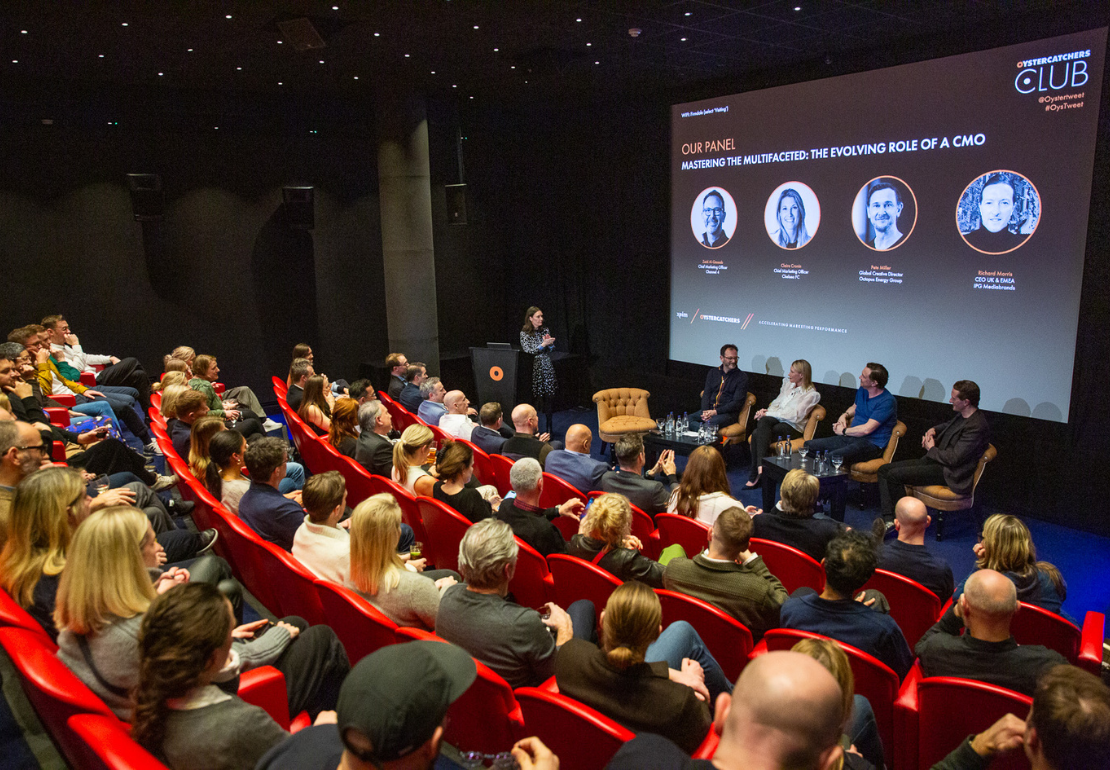
The latest Oystercatchers Club panel on the role of Chief Marketing Officers was an exceptionally timely panel to attend, given the enormous pressure to deliver growth, keep things on track and maintain a weather eye on changing customer expectations.
Nearly half of CMOs are working with tighter budgets and a similar percentage are trying to deliver against a background of departmental restructures and mergers, according to an annual Marketing Week survey.
The stellar line up for ‘Mastering The Multifaceted: The Evolving Role Of A CMO’, featured Zaid Al-Qassab, currently CMO of Channel 4 and soon to be CEO of M&C Saatchi, Claire Cronin, CMO of Chelsea FC, and Pete Miller, Global Creative Director of Octopus Energy Group, while Richard Morris, CEO UK & EMEA, IPG Mediabrands provided an agency perspective.
Oystercatcher’s Managing Partner Gill Huber steered the conversation across topics ranging from taking creative risks to nurturing the next generation of marketers. The discussion kicked off assessing the Modern CMO’s scope and the panel pointed to the requirement to develop and sustain the brand narrative and values, maintain and deepen a culture of marketing excellence and to be the custodian of the customer experience.
Zaid boiled the responsibilities down to their essence when he said: “Start by understanding what your business objectives are and how well your customer base or client base is feeling those objectives that are relevant to them are being met.”
The need to take risks and avoid being the ‘Chief Compromise Officer’ was hammered home – obviously it’s easier if you are a challenger or less-well-known brand and as Claire said: “Risk is very much dependent on your operating environment” – football fans making up one of the most vociferous of operating environments, I think it’s safe to say.
But the consensus was that while the CEO and CFO shouldn’t take huge gambles with a business, there should be enough controls within an organisation that people should feel confident and supported enough to be able to take a risk.
Bringing on the next generation of marketing leadership and how marketing renews itself with diverse and fresh talent is a hot topic. The best advice for the aspiring CMO was to be curious about how a business works, understand the supply chain, learn where the margin and revenue comes from – and grasp the experience customers have of the product or service once they’ve seen the comms.
Pete pointed to the “low process, high autonomy” approach his team took that means “every other week there’s somebody who’s got a new technology or a new platform they want to try it out or a new idea for a business product or whatever.”
Rounding off, the panel discussed the relatively short tenure of the CMO versus other C‑suite jobs and Richard probably said what most think: “I would advocate for CMOs to be in the role as long as possible, building trusted enduring relationships, and then wonderful things happen.”
That’s a message marketers and their allies need to keep hammering to the upper echelons of the C‑suite (and to shareholders).